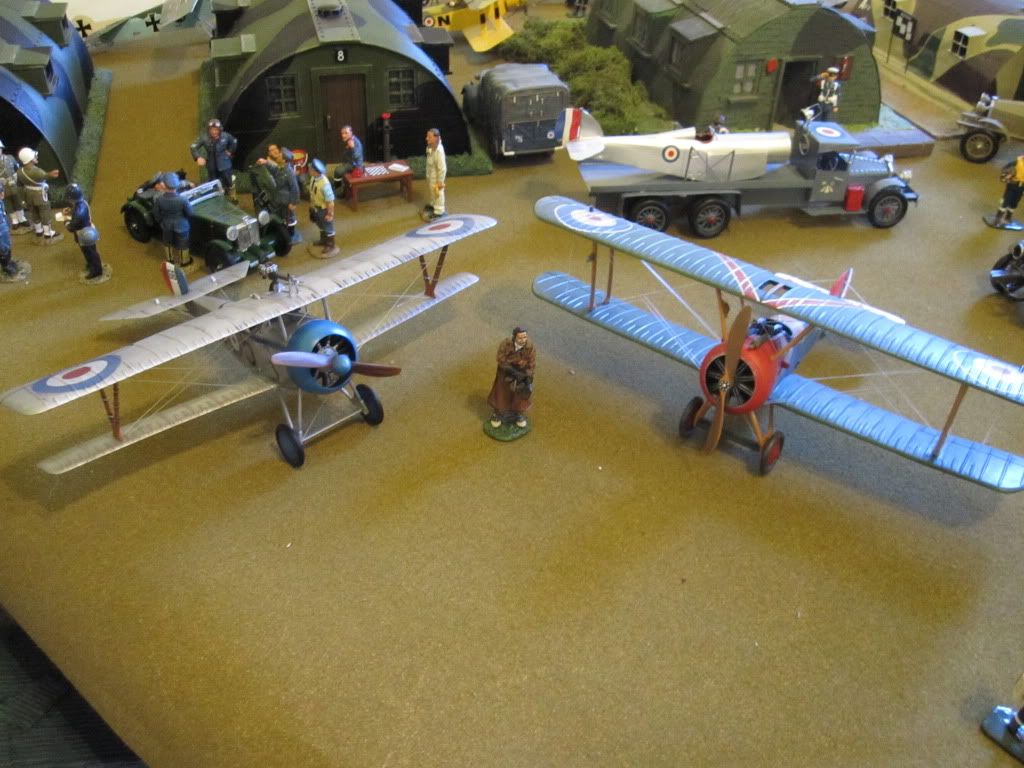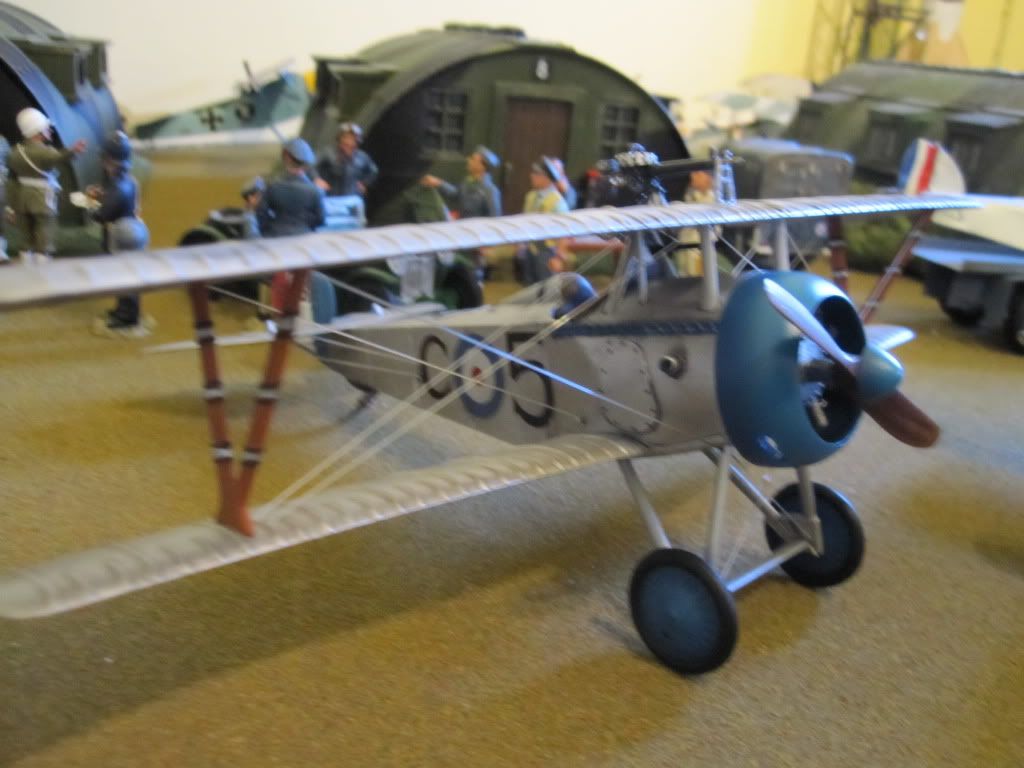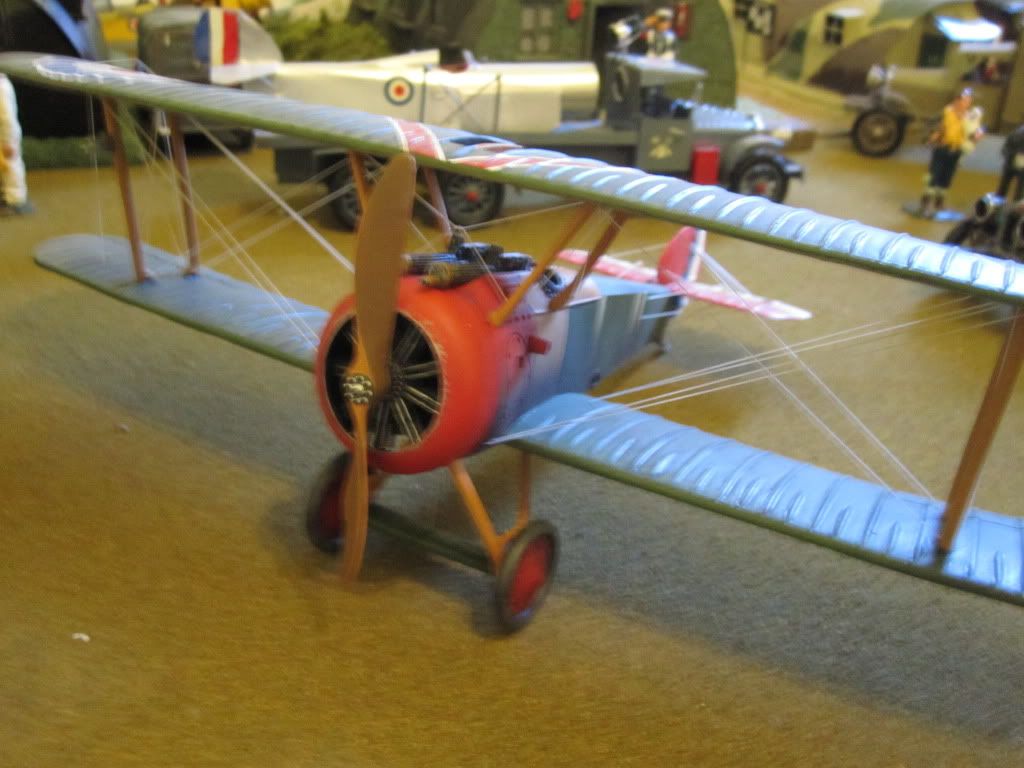A little bird has confirmed to me that the new KC WW1 aircraft are to be priced around the $198 mark, to stay with JJD's pricepoint. This info is secret, so don't spread it around.:wink2: -- AlKC pricing is all over the place. So it's anyone's guess. But the recent ME 109 with pilot was $159. I don't think Andy anticipates selling many P47s. John's WWI planes with pilot are about $230. I'm guessing KC comes in under that amount given their volume of sales. Andy also knows the pricing point of his competition. He may keep the price down at least on the first releases to get collectors interested. We will all find out soon enough.
You are using an out of date browser. It may not display this or other websites correctly.
You should upgrade or use an alternative browser.
You should upgrade or use an alternative browser.
Knights of the Sky (1 Viewer)
- Thread starter MCKENNA77
- Start date
Combat
Brigadier General
- Joined
- Jun 10, 2005
- Messages
- 11,014
A little bird has confirmed to me that the new KC WW1 aircraft are to be priced around the $198 mark, to stay with JJD's pricepoint. This info is secret, so don't spread it around.:wink2: -- Al
I wonder if it comes with the pilot figure?
I would imagine not. From what I was told, the pricing for the aircraft alone was to be roughly the same as the JJD pricepoint. I'm guessing that means the pilot figures will be priced separately. Don't know for certain though. -- AlI wonder if it comes with the pilot figure?
Second part first, yes, the gun was mounted on the upper wing to fire over the propeller arch. This was to get around the problem of firing through the prop, as at the time there was no workable synchronized gear for shooting through the prop. There were several different type mountings for the top wing Lewis gun. The guns were fired by means of a cable system. The best one was the Foster mount that allowed the pilot to reach up and pull the gun back down a railing so he could reach the ammo drum, for reloading or to aim the gun up, in the case of his making an attack on an aircraft from directly underneath. The gun could then be slid back up the railing, assisted by a bungee cord. Other mountings were fixed and did not allow for reloading, at least not easily. All over wing mountings were fixed to aim straight ahead and were aimed by pointing the aircraft at the target. As things became more sophisticated, sights were incorporated so the pilot didn't have to "spray and pray". The Nieuport JJD has modeled has a scope type sight that follows the line of the gun barrel, just as a scoped rifle would, only it is on the pilots level instead of on the gun itself. The overwing mountings became obsolete with the advent of synchronized machine guns but remained in use, most notably on the SE-5. This was due to the British affection for the overwing mount (mostly Albert Ball's influence). -- AlJust curious about the Nieuport - how was the wing mounted gun aimed and fired? Also, was the gun wing mounted to avoid firing through the propeller?
Combat
Brigadier General
- Joined
- Jun 10, 2005
- Messages
- 11,014
Second part first, yes, the gun was mounted on the upper wing to fire over the propeller arch. This was to get around the problem of firing through the prop, as at the time there was no workable synchronized gear for shooting through the prop. There were several different type mountings for the top wing Lewis gun. The guns were fired by means of a cable system. The best one was the Foster mount that allowed the pilot to reach up and pull the gun back down a railing so he could reach the ammo drum, for reloading or to aim the gun up, in the case of his making an attack on an aircraft from directly underneath. The gun could then be slid back up the railing, assisted by a bungee cord. Other mountings were fixed and did not allow for reloading, at least not easily. All over wing mountings were fixed to aim straight ahead and were aimed by pointing the aircraft at the target. As things became more sophisticated, sights were incorporated so the pilot didn't have to "spray and pray". The Nieuport JJD has modeled has a scope type sight that follows the line of the gun barrel, just as a scoped rifle would, only it is on the pilots level instead of on the gun itself. The overwing mountings became obsolete with the advent of synchronized machine guns but remained in use, most notably on the SE-5. This was due to the British affection for the overwing mount (mostly Albert Ball's influence). -- Al
Thanks Al. It's still amazing to me how much progress was made between the first planes developed in the early 1900's and WWI.
Louis Badolato
Lieutenant General
- Joined
- Apr 25, 2005
- Messages
- 18,442
I got my JJD Nieuport 17 today (along with my Heco Tinplate Spad XIII - thanks Tim and Hans!). I was impressed with the Sopwith Camel, but the Nieuport is even better. John, this is an exceptional effort, the equal of any Warbird I've seen to date.^&cool^&cool^&cool^&cool
The JJD models are outstanding. The attention to detail of every sort has to be seen to be appreciated. The paint jobs are very realistic and the weathering of the paint is spot on. The WW1 aircraft were fabric covered and regardless of whether the plane was painted or left in natural colors, they got dirty, fast. With the rotary engines of the day throwing oil all over the place and the dirty exhaust, these planes were probably pristine for only the time it took them to leave the factory. The JJD craft look like the delicate, lightweight, used machines that they were. Just a superior job. -- AlI got my JJD Nieuport 17 today (along with my Heco Tinplate Spad XIII - thanks Tim and Hans!). I was impressed with the Sopwith Camel, but the Nieuport is even better. John, this is an exceptional effort, the equal of any Warbird I've seen to date.^&cool^&cool^&cool^&cool
Louis Badolato
Lieutenant General
- Joined
- Apr 25, 2005
- Messages
- 18,442
I sent Terry (Phantom Warrior) three photos of my JJD Sopwith Camel, Nieuport 17, and the first of the JJD pilot figures, with a polite request that he post them on this thread.:smile2:
Phantom Warrior
Major
- Joined
- May 1, 2009
- Messages
- 6,881
Louis' new John Jenkins Designs Sopwith Camel and Nieuport 17,






Louis Badolato
Lieutenant General
- Joined
- Apr 25, 2005
- Messages
- 18,442
Louis' new John Jenkins Designs Sopwith Camel and Nieuport 17,



Thanks for posting the photos, Terry!:smile2:
Louis Badolato
Lieutenant General
- Joined
- Apr 25, 2005
- Messages
- 18,442
Those are great shots, Louis. Aerodrome expansion time! Need to make room for all those upcoming JJD planes. Best models on the market. -- Al
They really are magnificent. If you look underneath, John actually has spatter patterns from the oil thrown from the rotary engines painted on.^&cool^&cool
I only hope he finds a way to do a pusher plane.:salute::
Great detail. I also would like to see a pusher, maybe Lanoe Hawkers DH-2 that he flew against Richthofen. -- AlThey really are magnificent. If you look underneath, John actually has spatter patterns from the oil thrown from the rotary engines painted on.^&cool^&cool
I only hope he finds a way to do a pusher plane.:salute::
No releases at all? I hadn't heard this. -- AlDid I understand correctly there are no April releases? I was expecting the Baron himself this month.:smile2:
Combat
Brigadier General
- Joined
- Jun 10, 2005
- Messages
- 11,014
No releases at all? I hadn't heard this. -- Al
They are usually announced by now. Someone mentioned it here, but couldn't tell if they were joking. Maybe there is still hope.
Actually, I could use the break, if there is one. Lots of stuff to catch up on.:redface2: -- AlThey are usually announced by now. Someone mentioned it here, but couldn't tell if they were joking. Maybe there is still hope.
Louis Badolato
Lieutenant General
- Joined
- Apr 25, 2005
- Messages
- 18,442
Great detail. I also would like to see a pusher, maybe Lanoe Hawkers DH-2 that he flew against Richthofen. -- Al
John told me he keeps trying to get his factory to make a pusher plane, but so far they have said that it is just too difficult. You, I (and John) all have our fingers crossed that the factory will find a way.
I can see why there might be a problem. Looking at the two major pusher fighters for the RFC, the DH-2 and the FE-8, both have very complicated wire rigging, especially the DH-2. Don't know if replicating all that rigging detail is cost effective or even possible. -- AlJohn told me he keeps trying to get his factory to make a pusher plane, but so far they have said that it is just too difficult. You, I (and John) all have our fingers crossed that the factory will find a way.
Users who are viewing this thread
Total: 2 (members: 0, guests: 2)

